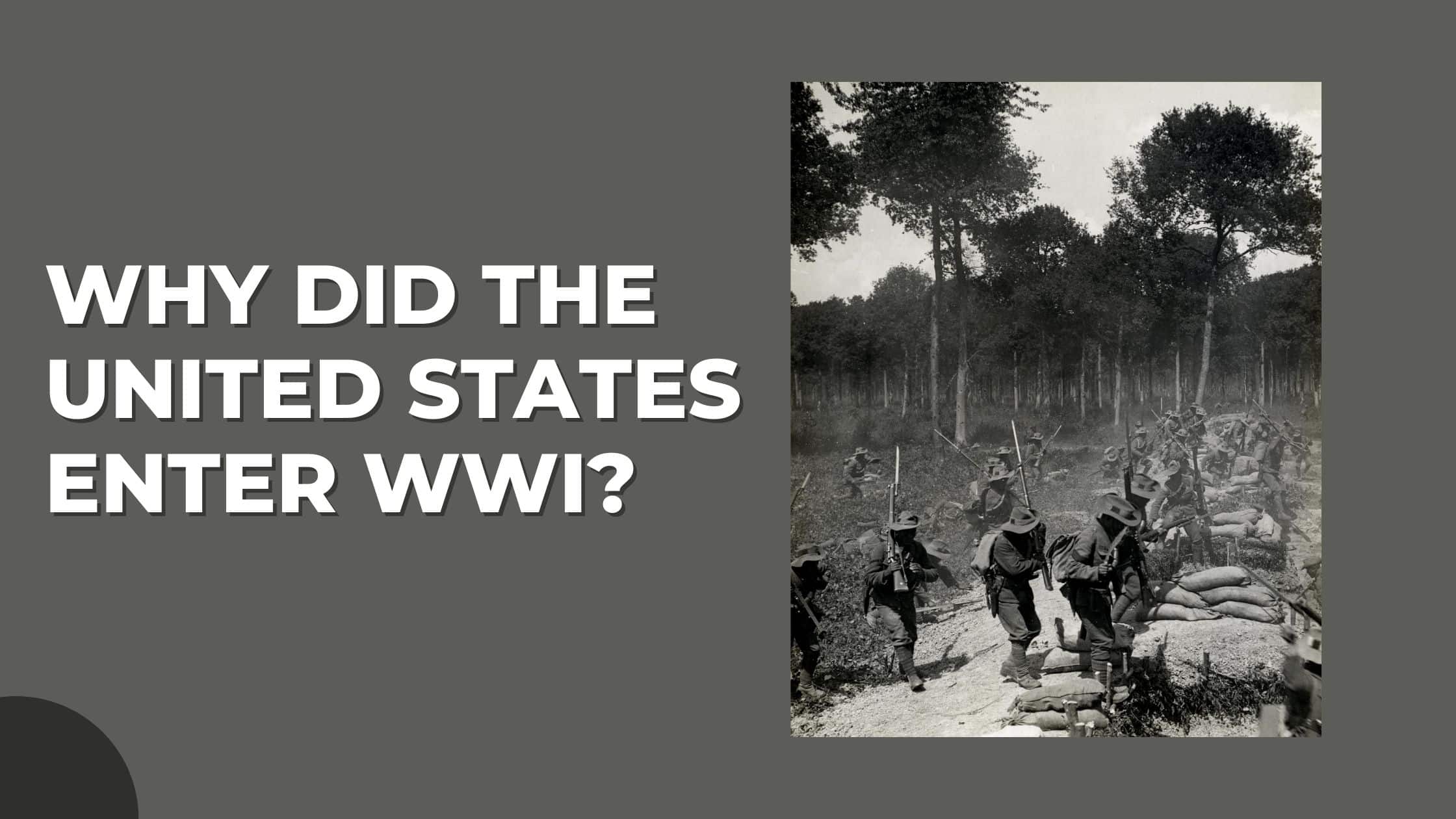Table of Contents
ToggleThe Lead-Up To America’s Entry Into WWI
When World War I broke out across Europe in 1914, President Woodrow Wilson, proclaimed American neutrality and was widely supported for doing so.

Get Smarter on US News, History, and the Constitution
Join the thousands of fellow patriots who rely on our 5-minute newsletter to stay informed on the key events and trends that shaped our nation's past and continue to shape its present.
However, public opinion in the United States changed after 128 American passengers lost their lives on the British ocean liner RMS Lusitania when a German U-boat sank it off the coast of Ireland in 1915.

This controversy, combined with the Zimmermann telegram affair – that revealed a potential alliance between Mexico and Germany against America – prompted the president to ask the United States Congress for a declaration of war against Germany.
President Wilson argued that Germany’s violation of an agreement to suspend unregulated submarine warfare in the Mediterranean and the North Atlantic, as well as its attempts to bring Mexico into an alliance against the United States, were justification for war.
The Zimmermann Telegram
On March 1st, 1917, the American people learned of Germany’s plan to ally with Mexico if the United States entered the war.
Months before this revelation, British intelligence had intercepted a secret message from Arthur Zimmerman (the German foreign minister) to the Mexican government, seeking an alliance that would include Japan to recover territory Mexico lost to the United States in the Mexican-American War of 1846-1848.

Zimmermann’s proposal of alliance with Mexico may have seemed anomalous at the time. However, Zimmermann sent the telegram anticipating unrestricted submarine warfare, a move the German Imperial government expected to draw the United States into the Great War.
The Germans hoped that conflict with Mexico would slow the supply of cargo and troops to the Allied war effort.
There were initially suspicions that the telegram was a forgery to entice America into conflict. However, Zimmermann gave a speech in the Reichstag on March 29th, 1917, confirming the telegram’s authenticity.
The Zimmermann telegram strengthened American public opinion against the Germans and was regarded as one of Britain’s most significant intelligence accomplishments of World War I.
The United States Involvement in the War
After the breakdown of diplomatic relations with Germany, tragic events pushed the United States to war. On March 9th, 1917, President Wilson ordered the arming of American merchant ships to protect themselves against U-boat attacks.

German submarines had already sunk three American ships between March 16th and March 18th, resulting in many United States citizens losing their lives.
On March 21st, Wilson called Congress to meet in session on April 2nd. He delivered a rousing pro-war message to the legislature, and on April 3rd, the Senate approved the decision to go to war.
It was subsequently endorsed by the House of Representatives on April 6th, and the president declared war immediately.
What Happened When the United States Entered the Conflict?
Within months of President Woodrow Wilson’s declaration of war against Germany, thousands of recruits were drafted into the military for intensive training.
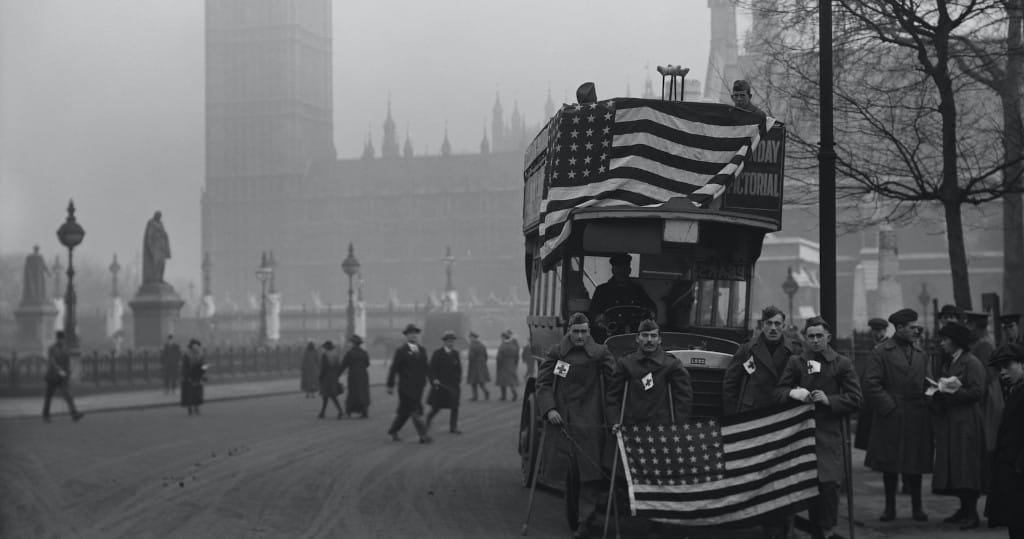
Women, who had never worked outside their homes before, took up employment in factories manufacturing supplies for the war effort. They also served in the American Red Cross and the ambulance corps at home and abroad.
The United States sent over one million American troops to Europe, where they experienced a conflict like no other. Warfare was waged in the air and trenches and marked the advance of military technologies such as the field telephone, the tank, and poison gas.
America’s Economic Contribution to WWI
The entry of the United States into WWI was undoubtedly the turning point of the war, as it made the defeat of Germany an inevitability.
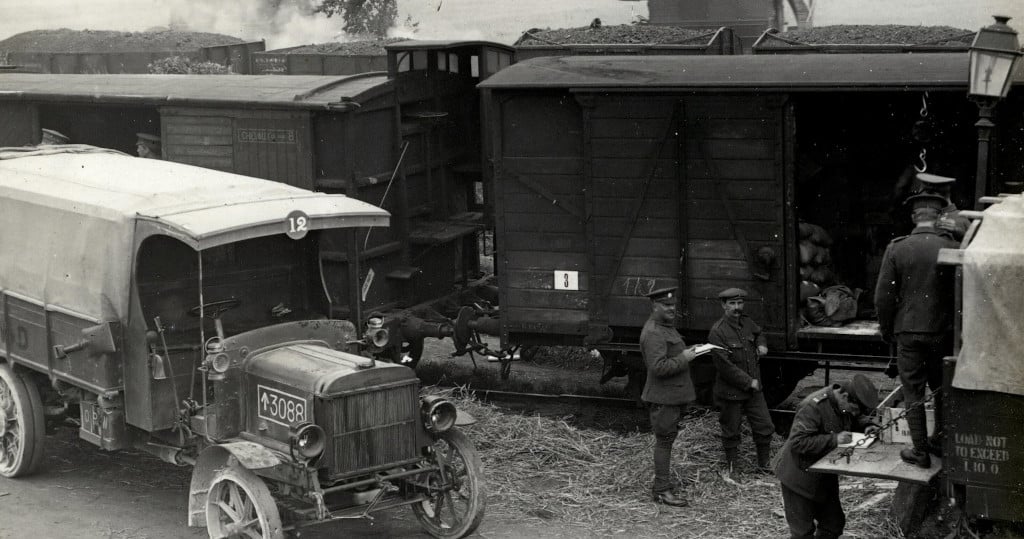
It had been predicted since 1916 that United States supplies and credit would sustain the Allied powers against Germany if America entered the conflict.
The United States’ armaments production would meet its own needs and those of France and Great Britain.
By April 1st, 1917, the Allies could no longer afford to pay for essential supplies from the United States. They could not have maintained the effort if the United States had remained neutral.
The United States loaned the Allies over $7 billion between 1917 and the war’s end, maintaining a supply of arms and food across the Atlantic.
America’s military contribution was as vital as its economic one. Conscription was introduced by the Selective Service Act of May 18th, 1917, whereby many months were needed to raise, train, and dispatch to Europe.
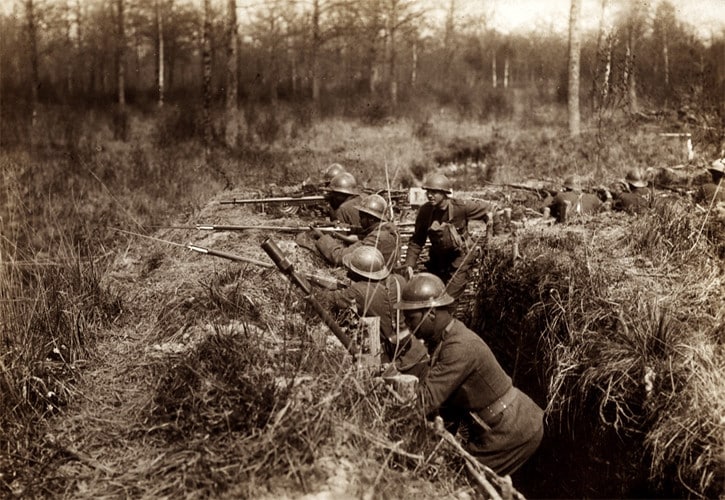
There had only been 85,000 American troops in France when Germany launched their last attack in March 1918. However, there were 1.2 million by the following September.
The United States Navy was the world’s second-largest when it entered the war in 1917. The Navy constructed destroyers and submarine chasers, critical in protecting Allied shipping from German U-boats.
35 United States destroyers were stationed at Queenstown (Cobh) on the Irish coast, and this was enough to supplement British destroyers for a transatlantic convoy system.
By the time the war ended, over 380 United States craft were in place overseas.
The United States Economy After WWI
When World War I drew to a close, the world’s economy began declining. However, between 1918 and 1919, the United States saw only a modest financial retreat, with unemployment of just 1.4%.
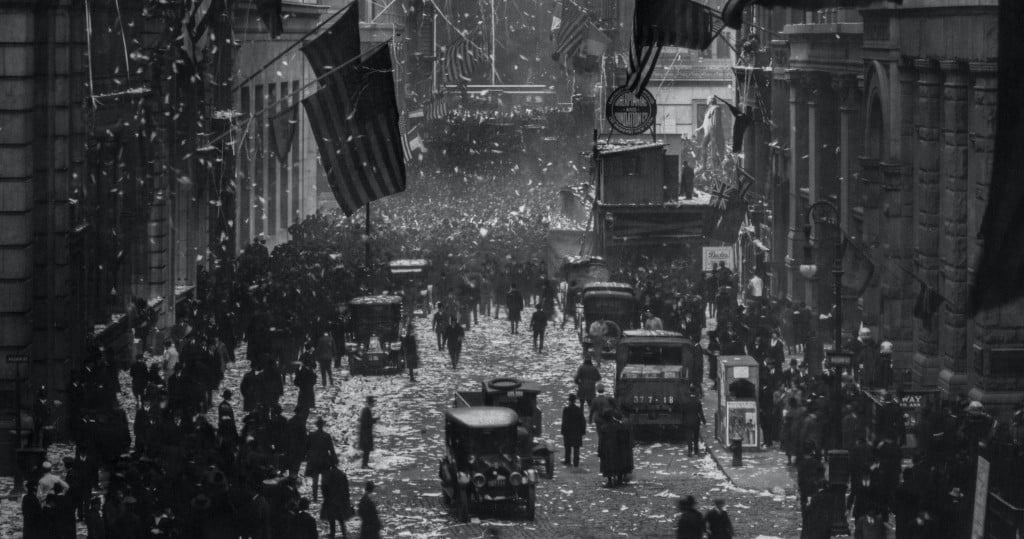
Productivity and inflation rose as prosperity supplied the demand for wartime deliveries, providing an upturn in the nation’s manufacturing sector.
Between 1920 and 1921, America was hit by a severe recession, along with the rest of the world. Production fell drastically, second only to the Great Depression.
At the same time, unemployment hit 12% while prices soared over 15%. There were increased business failures, and established enterprises saw profits decrease by 75%. Unsurprisingly, stock prices collapsed.
The Wall Street Crash of 1929 would later overshadow the depression of 1920 to 1921. Nevertheless, it is an event that holds a unique position in the history of American financial governance, serving as a case study for the post-war economic transition.
